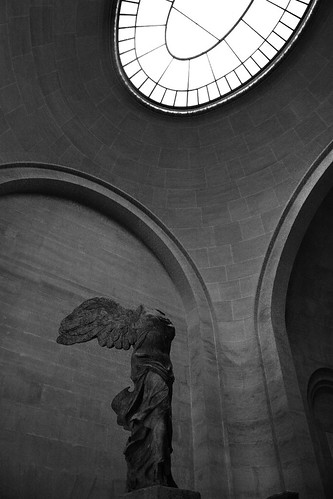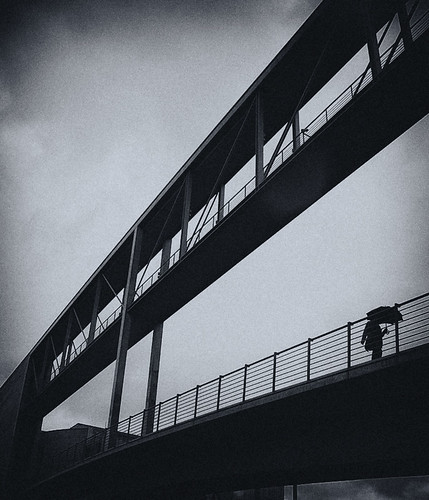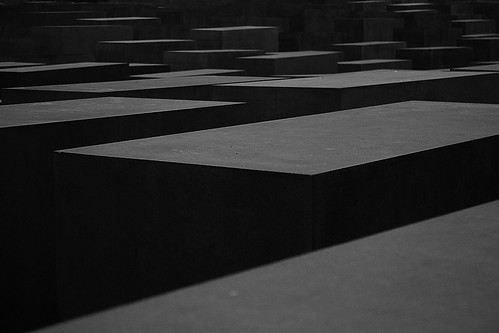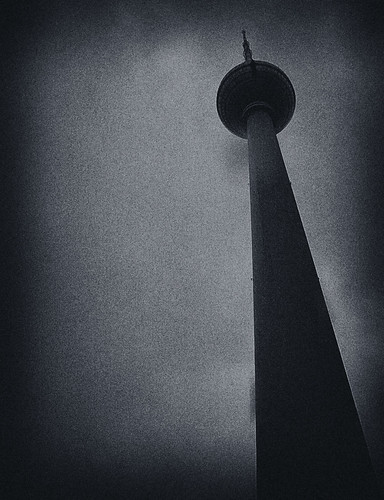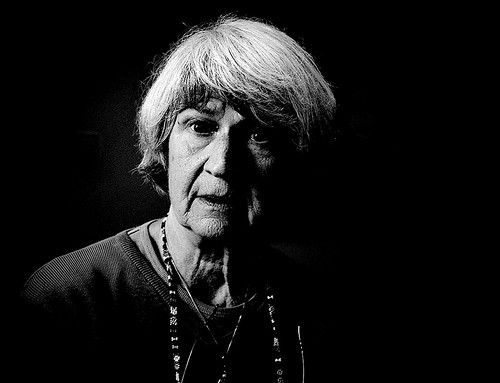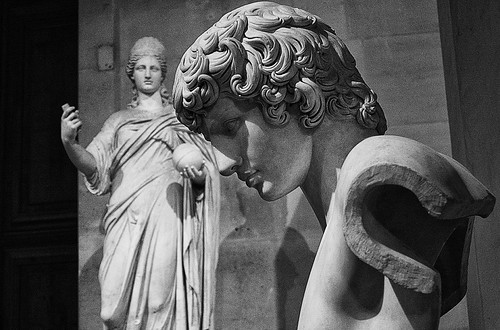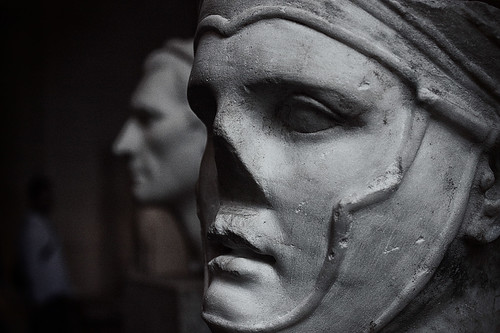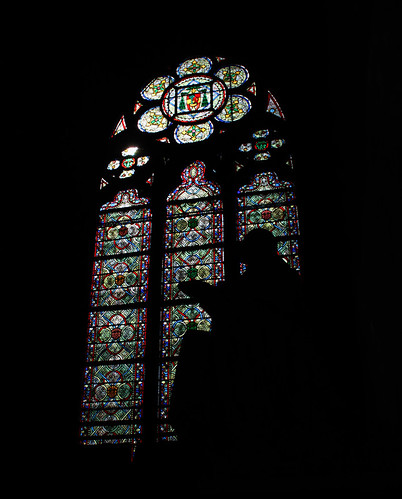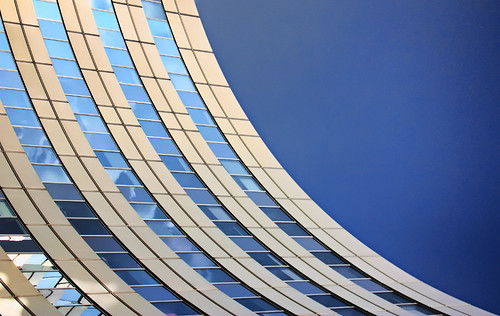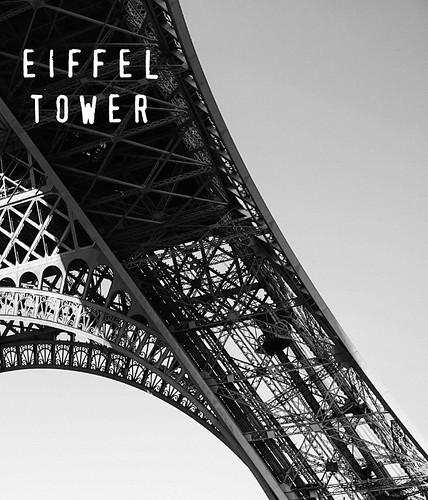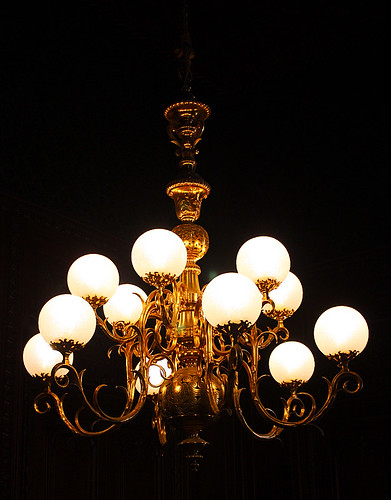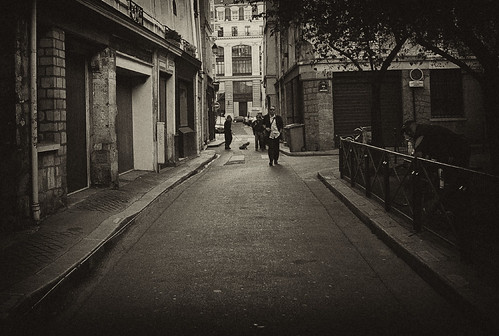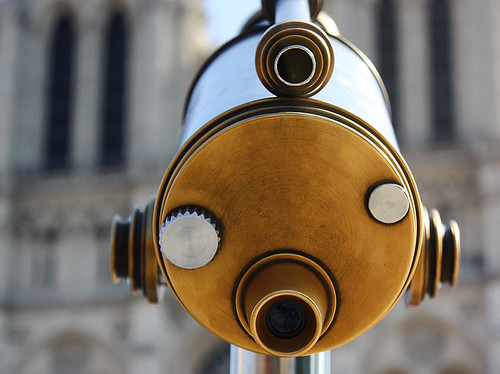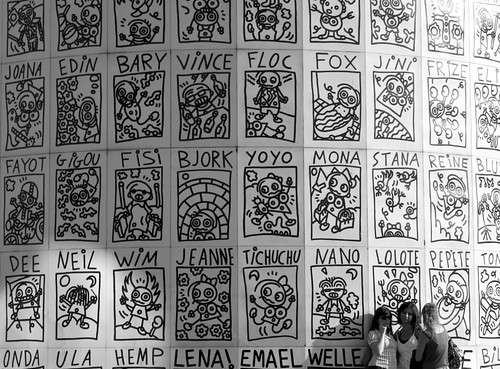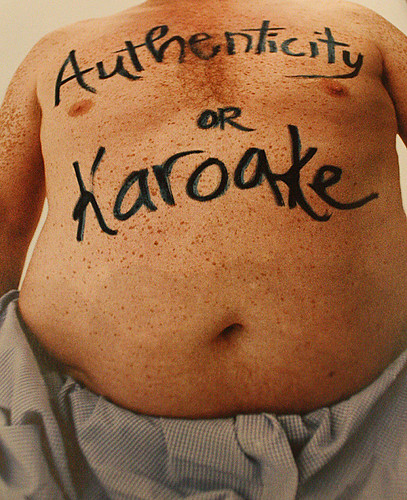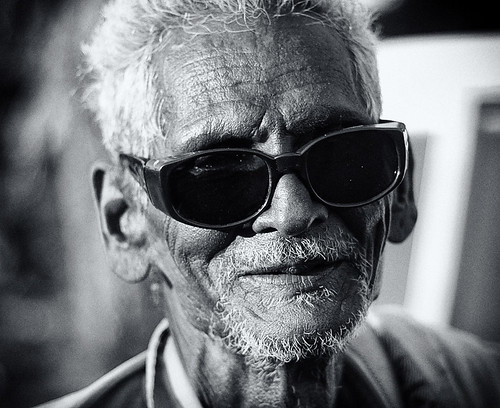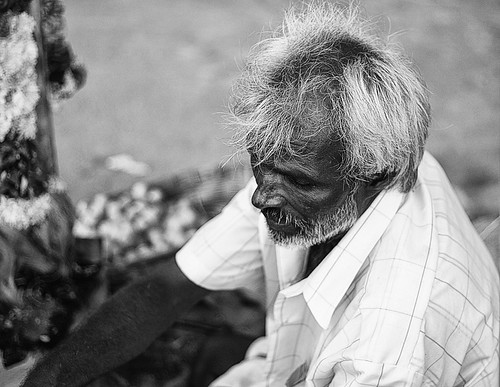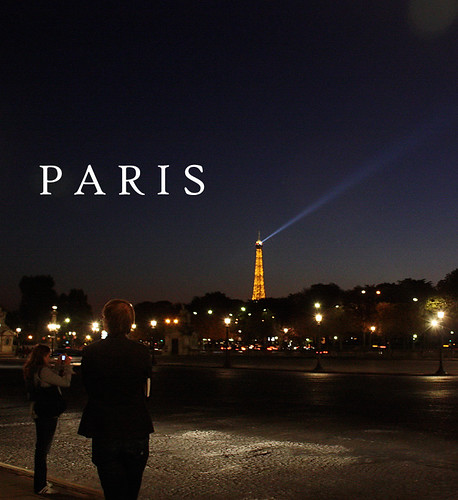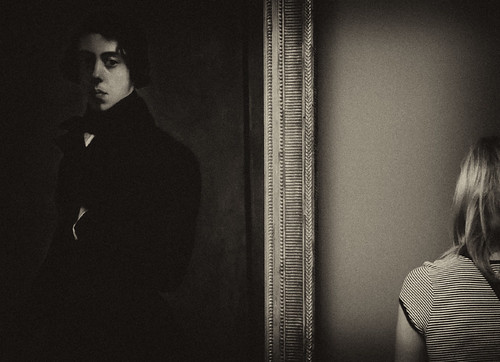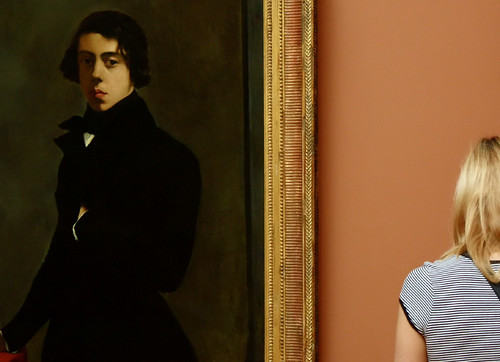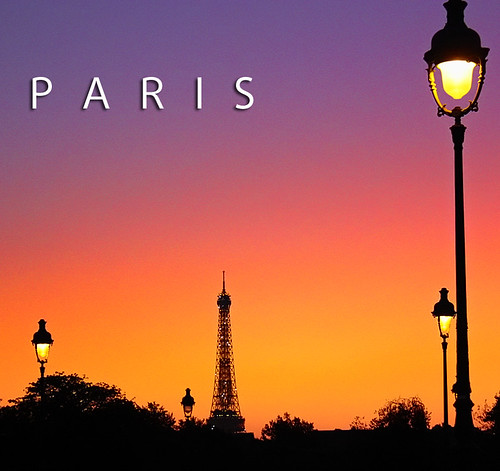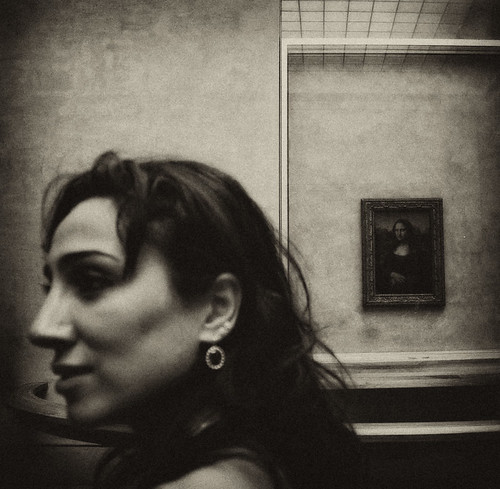Text source : Wikipedia
The Nike of Samothrace was discovered in 1863, but was estimated to have been created around 203 B.C It was created to not only honor the goddess, Nike, but to honor a sea battle. It conveys a sense of action and triumph as well as portraying artful flowing drapery through its features which the Greeks considered ideal beauty. The beautiful statue is currently displayed in the Louvre Museum in Paris.
Modern excavations suggest that the Victory occupied a niche in an open-air theater and also suggest it accompanied an altar that was within view of the ship monument of Demetrius I Poliorcetes (337-283 BC). Rendered in white Parian marble, the figure[2] originally formed part of the Samothrace temple complex dedicated to the Great Gods, Megalon Theon. It stood on a rostral pedestal of gray marble from Lartos representing the prow of a ship (most likely a trihemiolia), and represents the goddess as she descends from the skies to the triumphant fleet. Before she lost her arms, which have never been recovered, Nike's right arm was raised,[3] cupped round her mouth to deliver the shout of Victory.[4] The work is notable for its naturalistic pose and for the rendering of the figure's draped garments, depicted as if rippling in a strong sea breeze, which is considered especially compelling.
The statue’s outstretched right wing is a symmetric plaster version of the original left one. As with the arms, the figure's head has never been found, but various other fragments have since been found: in 1950, a team led by Karl Lehmann unearthed the missing right hand of the Louvre's Winged Victory. The fingerless hand had slid out of sight under a large rock, near where the statue had originally stood; on the return trip home, Dr Phyllis Williams Lehmann identified the tip of the Goddess's ring finger and her thumb in a storage drawer at the Kunsthistorisches Museum, Vienna, where the second Winged Victory is displayed; the fragments have been reunited with the hand,[5] which is now in a glass case in the Louvre next to the podium on which the statue stands.
The statue now stands over a supplementary platform over the prow that allows a better contemplation but was not present in the original. The different degree of finishing of the sides has led scholars to think that it was intended to be seen from three-quarters on the left.
A partial inscription on the base of the statue includes the word "Rhodhios" (Rhodes), indicating that the statue was commissioned to celebrate a naval victory by Rhodes, at that time the most powerful maritime state in the Aegean.[6]
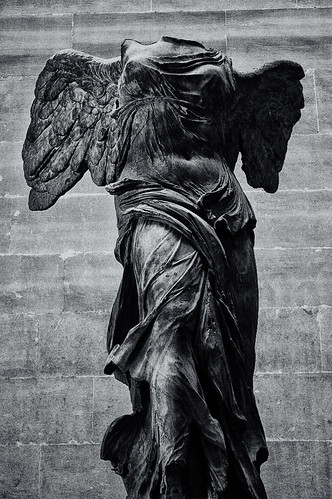
The product of Phidias, a Greek sculptor, the Victory is believed to date to between 220 and 190 BC. It was part of the Statue of Zeus at Olympia, one of the Seven Wonders of the Ancient World. When first discovered on the island of Samothrace (in Greek, Σαμοθρακη — Samothraki) and published in 1863 it was suggested that the Victory was erected by the Macedonian general Demetrius I Poliorcetes after his naval victory at Cyprus between 295 and 289 BC. The Samothrace Archaeological Museum continues to follow these originally established provenance and dates.[7] Ceramic evidence discovered in recent excavations has revealed that the pedestal was set up about 200 BC, though some scholars still date it as early as 250 BC or as late as 180.[8] Certainly, the parallels with figures and drapery from the Pergamon Altar (dated about 170 BC) seem strong. However, the evidence for a Rhodian commission of the statue has been questioned, and the closest artistic parallel to the Nike of Samothrace are figures depicted on Macedonian coins [9]. Samothrace was an important sanctuary for the hellenistic Macedonian kings. The most likely battle commemorated by this monument is, perhaps, the battle of Cos in 255 BC, in which Antigonus II Gonatas of Macedonia won over the fleet of Ptolemy II of Egypt [10].
In April 1863, the Victory was discovered by the French consul and amateur archaeologist Charles Champoiseau, who sent it to Paris in the same year. The statue has been reassembled in stages since its discovery. The prow was reconstructed from marble debris at the site by Champoiseau in 1879 and assembled in situ before being shipped to Paris.
After 1884, the statue was positioned where it would visually dominate the Daru staircase.[11] Since 1883, the marble figure has been displayed in the Louvre, while a plaster replica stands in the museum at the original location of the Sanctuary of the Great Gods on Samothrace.
The great statue was carefully lowered down a ramp in 1939 when it was removed from the Louvre and Paris for safekeeping.
In the autumn of 1939, the Winged Victory was removed from her perch in anticipation of the outbreak of war. All the museums of Paris were closed on August 25. Artwork and objects were packed for removal to locations deemed more safe outside Paris for safekeeping. On the night of September 3, the statue descended the staircase on a wooden ramp which was constructed across the steps.[12] During the years of World War II, the statue sheltered in safety in the Château de Valençay along with the Venus de Milo and Michelangelo's Slaves.[13]
The discovery in 1948 of the hand raised in salute, which matched a fragment in Vienna, established the modern reconstruction — without trumpet — of the hand raised in epiphanic greeting.
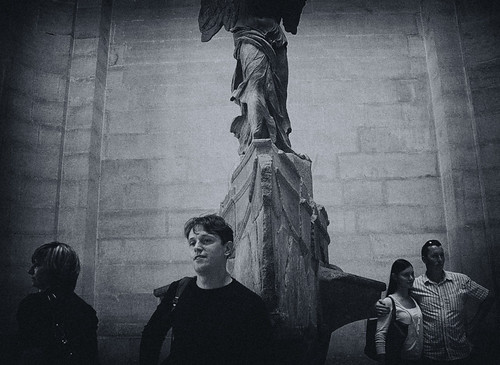
Despite its significant damage and incompleteness, the Victory is held to be one of the great surviving masterpieces of sculpture from the Hellenistic period. The statue shows a mastery of form and movement which has impressed critics and artists since its discovery. It is particularly admired for its naturalism and for the fine rendering of the draped garments. It is considered one of the Louvre's greatest treasures, and it is today displayed in the most dramatic fashion, at the head of the sweeping Daru staircase. The loss of the head and arms, while regrettable in a sense, is held by many to enhance the statue's depiction of the supernatural.
The Victory soon became a cultural icon to which artists responded in many different ways. For example, Abbott Handerson Thayer's A Virgin (1892-93) is a well-known painted allusion. When Filippo Tommaso Marinetti issued his Futurist Manifesto in 1909, he chose to contrast his movement with the supposedly defunct artistic sentiments of the Winged Victory: "... a race-automobile which seems to rush over exploding powder is more beautiful than the 'Victory of Samothrace'."
The 1913 sculpture Unique Forms of Continuity in Space by the Futuristic sculptor Umberto Boccioni, currently located at the Museum of Modern Art (MoMA) in New York, was highly influenced by the statue, It bears an underlying resemblance to Nike of Samothrace.[14]
Numerous copies exist in museums and galleries around the world; one of the best-known copies stands outside the Caesars Palace casino in Las Vegas. The Rolls-Royce radiator figurine, Spirit of Ecstasy, was also based on the Nike of Samothrace.[1] The first FIFA World Cup trophy, commissioned in 1930, designed by Abel Lafleur was based on the model.
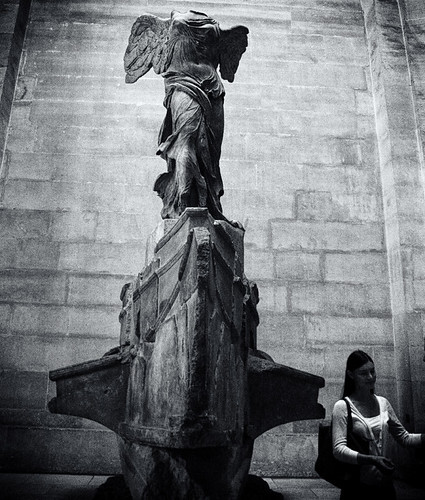
This statue was a favorite of Frank Lloyd Wright and he used reproductions of it in a number of his buildings, including Ward Willits House, Darwin D. Martin House and Storer House. It also features in the novel Seven Ancient Wonders, where it is fictionally made part of the Statue of Zeus at Olympia.
The second largest replica of this statue in the United States stands at Calvary Cemetery in Pittsburgh, PA, and is 8'1" high.

